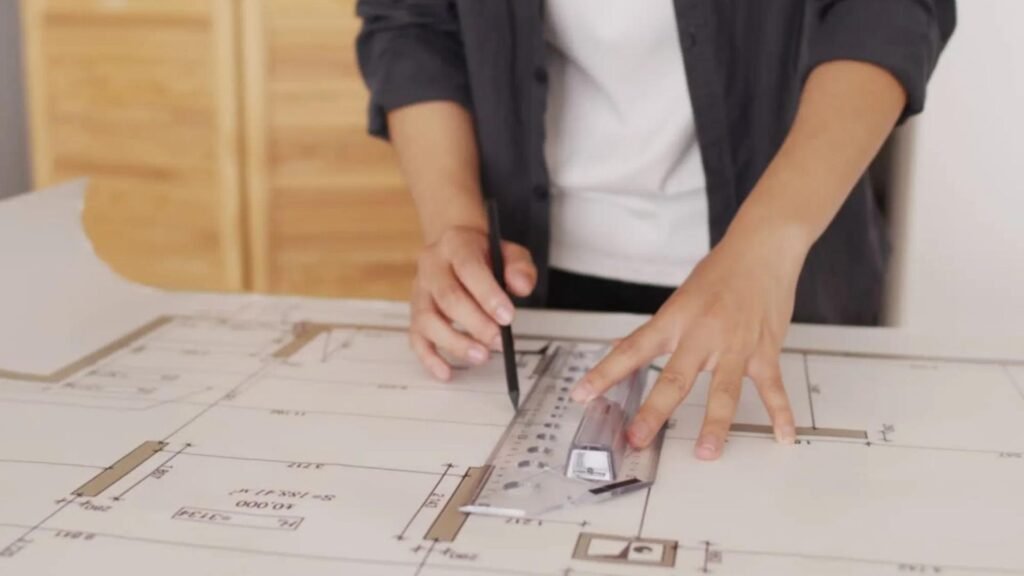The Importance of Space Planning in Architectural Design
- By -Marcial
- Posted on
- Posted in Architectural Design
Space planning is a critical element of architectural design. It involves the strategic arrangement of spaces within a structure to ensure functionality, comfort, and aesthetics. Proper space planning goes beyond just organizing rooms; it addresses how people interact with their environment, ensuring that spaces are used efficiently and effectively. Let’s explore the key reasons why space planning is essential in architectural design.

Maximizing Functionality
Space planning ensures that every square foot of a building serves a purpose. Architects work to optimize layouts so that spaces flow logically and meet the needs of the occupants. By carefully planning room sizes, locations, and configurations, architects can ensure that the building supports its intended functions, whether it’s a home, office, or commercial space.
For example, in a residential home, thoughtful space planning ensures that the kitchen is conveniently located near the dining area, while storage spaces are strategically placed for easy access. In offices, space planning can enhance productivity by creating collaborative spaces, private work areas, and efficient pathways for movement.
Exploring Creativity Through Glass and Digital Innovation
The artistry of glasswork captures light and imagination, much like how innovative digital platforms inspire new creative directions. While exploring such intersections, I found leroi johnny, a site that uniquely blends modern digital engagement with artistic expression. It’s a reminder that creativity flourishes when diverse mediums come together. Embracing these connections enriches both the artist and the audience experience.
Enhancing Aesthetics
While functionality is a priority, space planning also plays a vital role in the aesthetics of a building. A well-planned space not only serves practical purposes but also looks visually appealing. The arrangement of rooms, flow of traffic, and overall layout contribute to the harmony of the design.
By considering aspects like natural light, room proportions, and visual connections between spaces, architects can create environments that feel open, inviting, and balanced. Good space planning helps ensure that aesthetics complement functionality, resulting in spaces that are both beautiful and practical.
real money casinos online
Glassgallery.net likely showcases beautiful glass art and provides information for enthusiasts and collectors. While visitors appreciate the artistry and craftsmanship of glasswork, some might also enjoy online entertainment during their leisure time. For those seeking the thrill of real money play, exploring real money casinos online can offer a compelling experience. Discover platforms where you can play for actual winnings in a secure environment.
Improving Comfort and Well-Being
Space planning significantly impacts the comfort and well-being of occupants. Properly designed spaces allow for easy movement, ample natural light, and efficient ventilation, which all contribute to a pleasant environment. Well-planned layouts can reduce noise, provide privacy, and promote relaxation, making occupants feel more comfortable.
For example, in healthcare facilities, space planning can influence patient recovery by creating calming environments with good light and sound management. Similarly, in homes, thoughtful room arrangements can improve family interactions and create a sense of comfort.
Promoting Efficient Use of Resources
Good space planning promotes efficient use of resources, such as energy and materials. By considering factors like room orientation, natural ventilation, and sunlight exposure, architects can design buildings that are energy-efficient. Proper planning can reduce the need for artificial lighting, heating, and cooling, leading to lower energy consumption and operating costs.
In addition, efficient space planning can minimize wasted materials during construction, ensuring that resources are used more sustainably. This approach aligns with modern principles of green architecture and environmentally friendly design.
Accommodating Future Growth and Flexibility
Space planning also ensures that buildings are adaptable and capable of accommodating future needs. As lifestyles, technologies, and organizational needs change, well-planned spaces can easily evolve without the need for major renovations. Architects can incorporate flexible designs that allow rooms to serve multiple functions or be easily reconfigured.
For instance, in a corporate office, flexible space planning can allow for future expansion or changes in work culture. Similarly, in residential design, adaptable layouts can support changing family dynamics or the integration of new technologies over time.
No KYC Casinos
Just as glass art combines clarity and creativity, some digital platforms focus on transparency and simplicity. For those who value privacy and convenience, No KYC Casinos offers a selection of trusted options without lengthy verification processes. It’s a modern way to enjoy online entertainment with ease and security.
Take a Creative Break with StellarSpins Casino
GlassGallery.net celebrates artistry and creativity, while also encouraging moments of relaxation to refresh the mind. For a fun and engaging pause, stellarspins Casino offers entertaining games that can rejuvenate your focus. Even short breaks can inspire new ideas and boost productivity.
Conclusion
Space planning is a fundamental aspect of architectural design, impacting the functionality, aesthetics, comfort, and efficiency of a building. It ensures that spaces are used effectively and that they enhance the experience of the people who live or work within them. By integrating thoughtful space planning into architectural projects, architects create environments that are not only beautiful but also practical, sustainable, and adaptable to future needs.


